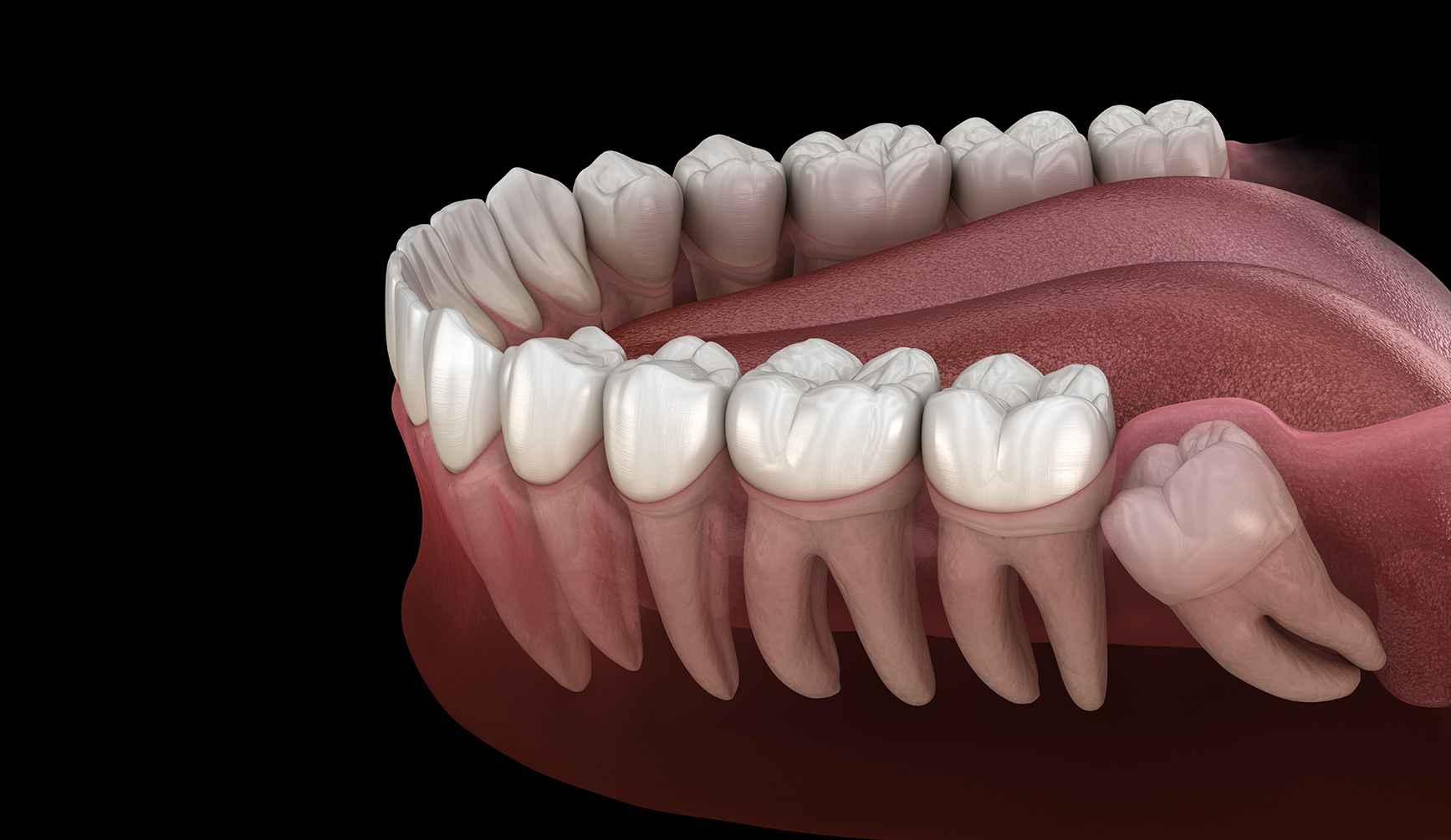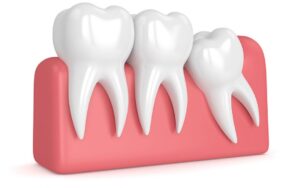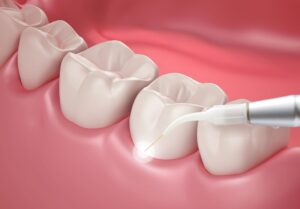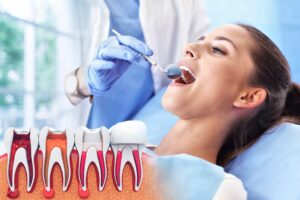Operculectomy: The Complete Guide

Discover the essentials of operculectomy, a surgical procedure to remove gum flaps over wisdom teeth, enhancing oral health.
Learn about the benefits, process, recovery, and care tips post-surgery. Ideal for those experiencing discomfort or seeking to prevent future dental issues. Read now for expert insights and guidance on operculectomy.
Key Takeaways
- Operculectomy targets the gum flap (operculum). It’s performed when the flap over a partially erupted tooth causes recurrent infections (pericoronitis), makes cleaning the area difficult, or chronically irritates surrounding tissues.
- Procedure basics: The flap is removed under local anesthesia. This involves an incision, cleaning the exposed tooth, and sometimes sutures.
- Pain & recovery: Expect some discomfort initially, but it’s manageable with medication. Initial healing takes about a week, with full recovery taking longer.
- Laser option: Laser-assisted operculectomy can minimize bleeding, pain, infection risk, and promote faster healing compared to traditional methods.
- Extraction alternative: If the underlying tooth is severely problematic, removing the entire tooth might be the better long-term solution.
Table of Contents
What is an Operculectomy
An operculectomy is a dental procedure that involves the surgical removal of the operculum, which is the flap of gum tissue that sometimes covers part of a tooth, most commonly the last molar, known as the wisdom tooth.
This piece of tissue can become a problem if it partially covers a tooth, leading to an area that is difficult to clean and susceptible to infection, a condition known as pericoronitis.
Pericoronitis can cause pain, swelling, and sometimes more serious infections.
The operculectomy procedure is typically recommended when:
- The operculum causes chronic or recurrent infections.
- There is difficulty in maintaining oral hygiene around a partially erupted tooth due to the presence of the operculum.
- There is a cyst or tumor formation under the operculum.
The procedure is usually performed under local anesthesia, and it involves the careful cutting away of the gum tissue to fully expose the tooth. This can help in alleviating pain, preventing future infections, and improving the ability to clean the area.
In some cases, the tooth itself may also need to be extracted, especially if it is impacted or if the operculectomy alone does not resolve the issues.
After the procedure, patients are given care instructions to ensure proper healing and to minimize the risk of complications.
Operculectomy dental code – D7971
When removing inflamed or hypertrophied tissue around partially erupted or impacted teeth, report excision of pericoronal gingiva (D7971) or operculectomy.
Operculectomy procedure
The procedure for an operculectomy involves several steps, typically performed by a dentist or an oral surgeon, and is aimed at removing the operculum, or the flap of gum tissue covering a partially erupted tooth.
Here’s a general outline of the procedure:
Initial Assessment
- Examination: The dentist or oral surgeon will first examine the affected area, possibly using X-rays or other imaging techniques to assess the position of the tooth and the extent of the gum coverage.
- Diagnosis: Based on the examination, they will diagnose the condition and determine if an operculectomy is the appropriate treatment.
Preparation
- Anesthesia: Local anesthesia is administered to numb the area around the tooth to ensure the patient does not feel pain during the procedure. In some cases, sedation may also be offered to help the patient relax.
The Operculectomy Procedure
- Incision: Using dental instruments, the dentist or oral surgeon makes an incision in the gum tissue (operculum) covering the tooth.
- Removal: The operculum is carefully removed to expose the underlying tooth. This is done using surgical instruments designed to cut and remove gum tissue.
- Debridement: The area around the tooth is cleaned to remove any debris or infected tissue. This step is crucial to prevent further infection and promote healing.
- Suturing (if necessary): In some cases, sutures (stitches) may be placed to help the gum tissue heal properly. Not all operculectomies require suturing.
Post-Operative Care
- Instructions: Patients are given detailed instructions on how to care for the surgical site, including oral hygiene practices, foods to avoid, and any recommended pain management or antibiotic medications.
- Recovery: The recovery period can vary, but patients are usually advised to eat soft foods and avoid vigorous brushing or flossing around the surgical site to prevent irritation or infection.
- Follow-up: A follow-up appointment may be scheduled to ensure proper healing and to remove sutures if they were placed.
Potential Complications
As with any surgical procedure, there are potential risks and complications, such as infection, bleeding, or damage to nearby teeth.
These are relatively rare when the operculectomy is performed by an experienced professional.
In some cases you’ll wonder if you should have an operculectomy or a tooth removal. Read more: Operculectomy Vs Extraction.
Operculectomy price
The cost of an operculectomy can vary depending on several factors, including the location of the tooth, the complexity of the procedure, the experience of the dentist, geographic location, whether or not you have dental insurance
In general, you can expect to pay between $150 and $500 for an operculectomy.
Here are some additional factors that can affect the cost of an operculectomy:
- Anesthesia: If you require anesthesia during the procedure, this will add to the cost.
- X-rays: You may need to have X-rays taken before the procedure, which will also add to the cost.
- Medications: You may be prescribed antibiotics or other medications after the procedure, which will add to the cost.
If you are concerned about the cost of an operculectomy, it is important to talk to your dentist. They can give you a more accurate estimate of the cost based on your individual circumstances.
Operculectomy healing time
The healing time after an operculectomy can vary depending on several factors, including the complexity of the procedure, the patient’s overall health, and how well the post-operative care instructions are followed.
The initial healing phase, where the gum tissue starts to heal and any discomfort begins to diminish, takes about 7 to 10 days.
Complete healing and full tissue regeneration can take several weeks to a few months.
Immediate Post-Operative Period (First 24 Hours)
You may experience bleeding, which typically lessens within the first few hours. Applying pressure with a gauze pad can help control it. Swelling and discomfort are common but can be managed with ice packs and prescribed pain medication.
First Week
Swelling usually peaks within the first 48 to 72 hours and then gradually subsides.
Follow a soft diet and avoid any actions that could disrupt the healing site, such as sucking through a straw, smoking, or vigorous rinsing.
Oral hygiene is important, but the surgical area should be treated gently. Rinsing with salt water or a prescribed mouthwash can help keep the area clean.
Weeks 2 to 4
Most of the soft tissue healing occurs during this period. Patients generally start to feel much better, and the need for pain medication significantly decreases.
Normal oral hygiene practices can usually be resumed, but the surgical site may still need to be treated gently.
Beyond One Month
By this time, the gum tissue should be well on its way to healing completely. The underlying bone can take several months to fully remodel and heal.
Any persistent discomfort, swelling, or signs of infection should be reported to the dentist or oral surgeon.
Factors Affecting Healing Time
- Patient’s Health: Individuals with underlying health conditions, such as diabetes or immune disorders, may experience slower healing times.
- Smoking: Smoking can significantly delay healing and increase the risk of complications.
- Oral Hygiene: Good oral hygiene practices are crucial for successful healing, but aggressive brushing or flossing around the healing site should be avoided until it has fully healed.
Following the post-operative care instructions provided by your dental professional allows for a smooth and speedy recovery.
If you have any concerns about your healing process, it’s important to contact your dentist or oral surgeon for advice.
Is operculectomy painful
An operculectomy, like any surgical procedure, can be associated with some level of discomfort or pain, both during and after the procedure.
The extent of pain experienced can vary widely among individuals.
During the Procedure
- Local Anesthesia: The procedure is typically performed under local anesthesia, which numbs the area around the tooth and gum being treated. This means that during the operculectomy itself, you should not feel pain, but you may feel pressure or movement.
- Sedation Options: For patients who are anxious or prefer not to be aware of the procedure, sedation options may be available. These can range from nitrous oxide (laughing gas) to oral sedatives or even IV sedation, depending on the practice and the patient’s needs.
After the Procedure
- Immediate Aftermath: Once the anesthesia wears off, it is common to experience some pain and discomfort. The intensity of pain can vary, but it is usually manageable with over-the-counter pain relievers or prescription medication provided by the dentist or oral surgeon.
- Swelling and Bruising: Swelling and sometimes bruising around the area are common, which can contribute to the discomfort. These symptoms typically peak within the first few days after the procedure and then gradually subside.
- Pain Duration: The most significant discomfort usually occurs within the first 48 to 72 hours after the procedure. Most patients find that the pain begins to diminish after the first few days and is significantly reduced within a week.
- Pain Management: Pain can be effectively managed with medications prescribed by your dentist or oral surgeon, as well as with home care measures such as applying ice packs to the cheek to reduce swelling, eating soft foods, and avoiding actions that can irritate the surgical site (like smoking or using a straw).
Minimizing Pain
- Follow Post-Operative Instructions: Your dentist or oral surgeon will provide detailed instructions on how to care for your mouth after the operculectomy. Following these instructions carefully can help minimize pain and promote healing.
- Good Oral Hygiene: Keeping the mouth clean after surgery is crucial. You may be advised to gently rinse your mouth with warm salt water or a prescribed mouthwash to help keep the area clean and reduce the risk of infection, which can exacerbate pain.
- Rest and Nutrition: Getting enough rest and maintaining a diet of soft, nutritious foods can also help the healing process and reduce discomfort.
Operculectomy at home
Performing an operculectomy at home is not recommended under any circumstances. An operculectomy is a surgical procedure that involves the removal of the operculum, the flap of gum tissue overlying a partially erupted tooth, typically a wisdom tooth.
This procedure requires professional dental or medical expertise, sterile equipment, and an environment that adheres to health and safety standards to prevent infection and complications.
Reasons Why Operculectomy Should Not Be Attempted at Home:
- Risk of Infection: Without a sterile environment and proper instruments, there’s a high risk of introducing bacteria into the wound, leading to infections that could have serious health consequences.
- Pain Management: Professional procedures are performed under local anesthesia (and sometimes sedation) to ensure the patient feels no pain. At home, managing pain effectively would be impossible, making the procedure extremely painful and traumatic.
- Potential for Injury: Without the proper training and instruments, there’s a significant risk of injuring the surrounding tissues, teeth, or even causing nerve damage, which could result in long-term issues such as numbness or loss of function.
- Inadequate Removal: Even if one were to attempt this, there’s a high likelihood that the operculum would not be removed properly, which could lead to further dental issues, including recurrent infections or damage to the tooth itself.
- Legal and Ethical Concerns: Performing surgical procedures without a license is illegal in many jurisdictions and can have serious legal consequences.
What to Do Instead:
- Consult a Dental Professional: If you’re experiencing pain or discomfort from a partially erupted tooth or believe you might need an operculectomy, the best course of action is to consult with a dentist or oral surgeon. They will provide a proper diagnosis and treatment plan.
- Discuss Concerns: If cost or fear of the procedure is a concern, discuss these openly with your dental care provider.
- Preventive Care: Maintain good oral hygiene and regular dental check-ups to prevent issues that might lead to the need for an operculectomy.
Attempting medical or dental procedures at home can lead to serious complications. Always seek professional care for health-related issues.
Read more: Operculectomy At Home
Operculectomy indications (when do you need an Operculectomy?)
An operculectomy may be needed in several situations, primarily related to issues with the wisdom teeth (third molars) or other partially erupted teeth.
Here are common scenarios when an operculectomy might be recommended:
- Pericoronitis: This is the most common reason for an operculectomy. Pericoronitis occurs when the operculum, or the gum flap over a partially erupted tooth, becomes inflamed and infected. This condition can cause pain, swelling, difficulty in opening the mouth, and even a bad taste due to pus from the infection.
- Poor Oral Hygiene: If the operculum makes it difficult to clean around the tooth, leading to recurrent infections or decay in the partially erupted tooth or adjacent teeth, removal of the gum flap might be necessary to improve access for cleaning.
- Chronic Irritation: Sometimes, the operculum can cause chronic irritation and trauma to the surrounding area, including the cheek or other parts of the mouth, which might necessitate its removal.
- Cyst or Tumor Formation: In rare cases, cysts or tumors can develop in the tissue around a partially erupted tooth. An operculectomy might be performed as part of the treatment to remove or biopsy these growths.
- Preparation for Orthodontic Treatment: Occasionally, an operculectomy is performed to remove any gum tissue that might interfere with orthodontic treatments or appliances.
- Preventive Measure: In some instances, even if the operculum is not currently causing problems, a dentist or oral surgeon might recommend its removal to prevent potential future issues, especially if the tooth underneath is unlikely to erupt fully into a position that allows for proper cleaning and maintenance.
Operculectomy vs extraction
Operculectomy and tooth extraction are two different dental procedures that are often considered when dealing with problematic wisdom teeth or other dental issues.
Each procedure has its specific indications, benefits, and drawbacks.
Operculectomy
Definition: An operculectomy involves the surgical removal of the operculum, which is the flap of gum tissue covering a partially erupted tooth, typically a wisdom tooth. This procedure is aimed at resolving issues like pericoronitis (inflammation of the operculum) without removing the tooth itself.
Indications:
- Pericoronitis that is recurrent or difficult to manage with conservative treatments.
- Difficulty in maintaining oral hygiene around a partially erupted tooth due to the operculum.
- To prevent potential complications associated with a partially erupted tooth.
Benefits:
- Preserves the tooth, which might be useful for maintaining the integrity of the dental arch and occlusion.
- Potentially less invasive compared to extraction, depending on the complexity of the case.
Drawbacks:
- The underlying issue with the tooth’s eruption might not be resolved, leading to possible future complications.
- There might be a recurrence of pericoronitis or other issues if the tooth does not fully erupt into a functional position.
Tooth Extraction
Definition: Tooth extraction involves the complete removal of a tooth from the mouth. When it comes to wisdom teeth, extraction is often considered when they are impacted, cause recurrent infections, or lead to other dental problems.
Indications:
- Impacted wisdom teeth that cannot erupt properly.
- Recurrent infections and significant decay that cannot be addressed with restorative procedures.
- Crowding or damage to adjacent teeth.
- Preparation for orthodontic treatment that requires space.
Benefits:
- Completely resolves issues related to the problematic tooth, including the risk of infection and crowding.
- May be necessary to prevent future dental complications, especially with impacted teeth that have no chance of erupting properly.
Drawbacks:
- More invasive procedure with a potentially longer recovery time.
- Risks associated with tooth extraction, such as dry socket, infection, or damage to adjacent structures.
Choosing Between Operculectomy and Extraction
The choice between an operculectomy and tooth extraction depends on several factors, including the tooth’s position, the patient’s overall dental health, and the specific problems caused by the tooth.
For example, an operculectomy might be chosen to preserve a tooth that has the potential to erupt fully and become functional, while extraction might be preferred for an impacted tooth that is causing significant problems or has no chance of erupting properly.
Operculectomy procedure with blade
An operculectomy performed with a scalpel blade is a traditional method for removing the operculum, the flap of gum tissue covering a partially erupted tooth, often a wisdom tooth.
This procedure aims to alleviate symptoms such as pain, infection (pericoronitis), and difficulty in cleaning the area. Here’s a step-by-step overview of how an operculectomy is typically performed using a scalpel blade:
Initial Consultation and Diagnosis
The dentist or oral surgeon examines the affected area, possibly using X-rays to assess the tooth’s position and the extent of the gum coverage.
If the operculum is causing problems like recurrent infections or is hindering oral hygiene, an operculectomy may be recommended.
Preparation
Local anesthesia is administered to numb the area around the tooth to ensure the patient feels no pain during the procedure. In some cases, sedation may be offered to help the patient relax.
The Operculectomy Procedure
- Incision: The dentist or oral surgeon uses a scalpel blade to carefully make an incision in the operculum. The technique and shape of the incision can vary based on the specific situation and the professional’s preference.
- Removal of the Operculum: The gum tissue flap (operculum) is then gently lifted and removed to expose the underlying tooth. This is done with precision to minimize damage to the surrounding tissues.
- Cleaning: Once the operculum is removed, the area around the tooth is cleaned to remove any debris or infected tissue. This step is crucial for preventing further infection.
- Suturing: If necessary, sutures may be placed to help the gum tissue heal properly. However, not all operculectomies require suturing.
Post-Operative Care
- Instructions: Patients are given detailed care instructions, including how to manage pain, swelling, and oral hygiene during the healing process.
- Pain Management: Over-the-counter pain relievers or prescribed medications can be used to manage discomfort.
- Follow-Up: A follow-up appointment may be scheduled to check on the healing process and to remove sutures if they were placed.
Recovery
- Healing Time: Initial healing typically takes about 7 to 10 days, with complete tissue healing occurring over the following weeks.
- Diet and Oral Hygiene: Patients are advised to eat soft foods and maintain gentle oral hygiene practices to avoid disturbing the healing site.
Advantages and Disadvantages
- Advantages: Using a scalpel blade for an operculectomy allows for precise control over the incision and removal of the operculum. It’s a well-established technique with a long history of success.
- Disadvantages: Compared to laser-assisted operculectomies, the traditional scalpel method may result in more bleeding and potentially longer healing times. There’s also a subjective aspect of discomfort associated with the use of a blade, though this is mitigated by local anesthesia.
Laser-assisted Operculectomy
Laser-assisted operculectomy is a modern dental procedure that utilizes laser technology to remove the operculum, which is the flap of gum tissue covering a partially erupted tooth, such as a wisdom tooth.
This technique offers several advantages over traditional surgical methods, making it an attractive option for both dentists and patients.
How It Works
In laser-assisted operculectomy, a dental laser is used to precisely cut and remove the operculum. The laser emits a concentrated beam of light energy that can vaporize or cut through soft tissue with minimal bleeding. The procedure is typically performed under local anesthesia to ensure the patient’s comfort.
Benefits of Laser-Assisted Operculectomy
- Reduced Bleeding: The laser cauterizes blood vessels as it cuts, which significantly reduces bleeding compared to traditional scalpel techniques.
- Less Pain and Swelling: Patients often report less post-operative pain and swelling, as the laser causes less trauma to the surrounding tissues.
- Lower Risk of Infection: The laser sterilizes the area as it works, potentially reducing the risk of post-operative infections.
- Faster Healing: The precision and minimal tissue damage associated with laser surgery can lead to quicker recovery times.
- No Need for Sutures: In many cases, the laser procedure does not require sutures, which eliminates the need for a follow-up visit to remove them.
How painful is operculectomy?
An operculectomy involves some discomfort and pain, particularly after the local anesthesia wears off. The level of pain varies among individuals but is generally manageable with prescribed or over-the-counter pain medications. Most significant discomfort occurs within the first few days post-procedure and gradually decreases. Proper post-operative care can significantly reduce pain and promote healing.
How long does it take to recover from an operculectomy?
Recovery from an operculectomy typically takes about 7 to 10 days for initial healing, with complete tissue healing occurring over several weeks. The exact duration can vary based on individual health factors and adherence to post-operative care instructions.
Is Operculectomy necessary?
An operculectomy is necessary when a gum flap over a partially erupted tooth causes recurrent infections, pain, or hinders oral hygiene, to prevent further complications and improve oral health.
What are the disadvantages of Operculectomy?
Disadvantages of operculectomy include potential for post-operative pain, swelling, risk of infection, and, in some cases, recurrence of issues if the underlying tooth does not fully erupt or if oral hygiene is not adequately maintained.
What happens if Operculectomy is not performed?
If an operculectomy is not performed, persistent issues such as recurrent infections, pain, and difficulty in maintaining oral hygiene around the affected tooth may continue, potentially leading to more serious complications like gum disease or tooth decay.
Reference:
- Dodson TB (Sep 2012). “The management of the asymptomatic, disease-free wisdom tooth: removal versus retention. (review)”. Atlas Oral Maxillofac Surg Clin North Am. 20 (2): 169–76
Fact Checked
Our dedicated team rigorously evaluates every article and guide to ensure the information is factual, up-to-date, and free of bias.
Updated Regularly
We update our articles and reviews regularly to ensure you have access to the latest data in the dental industry.
The content on Dental3DU’s blog is intended for educational purposes only. This information should not be relied upon as professional medical counsel. Be sure to always consult with your dentist about the dangers and benefits of any medication, treatment or procedure.







